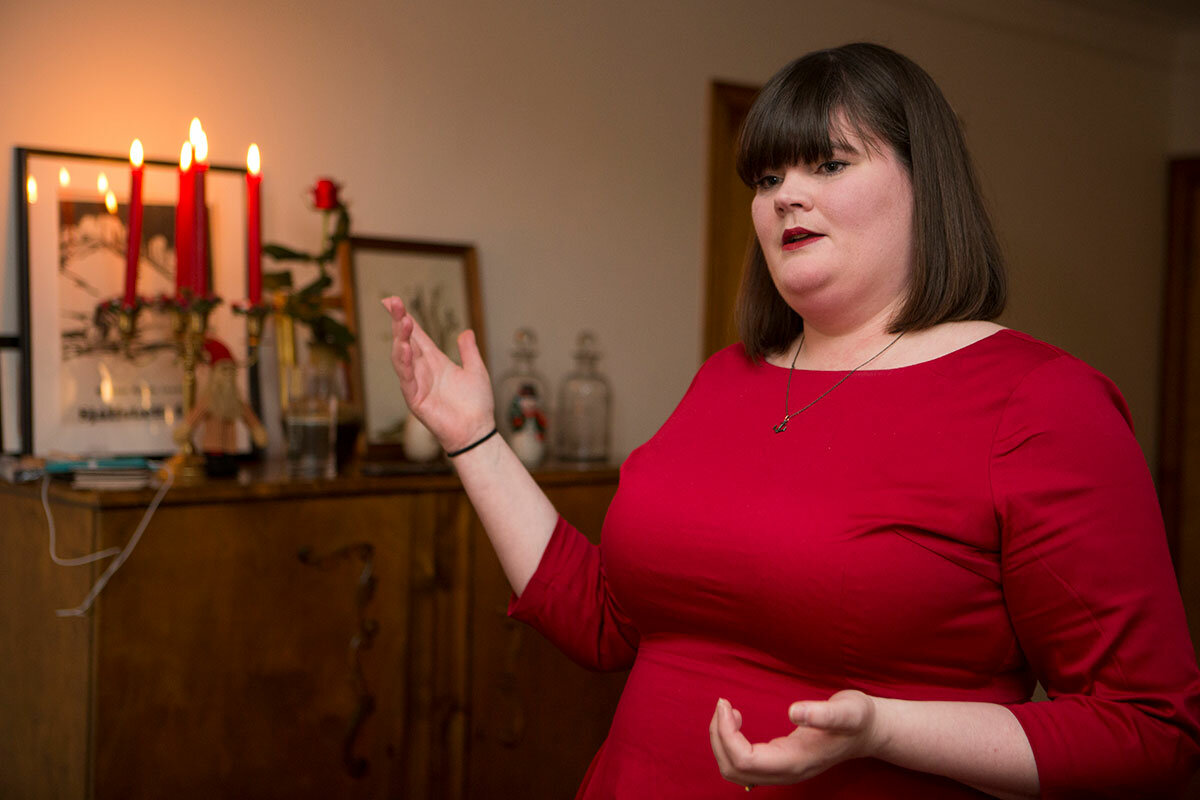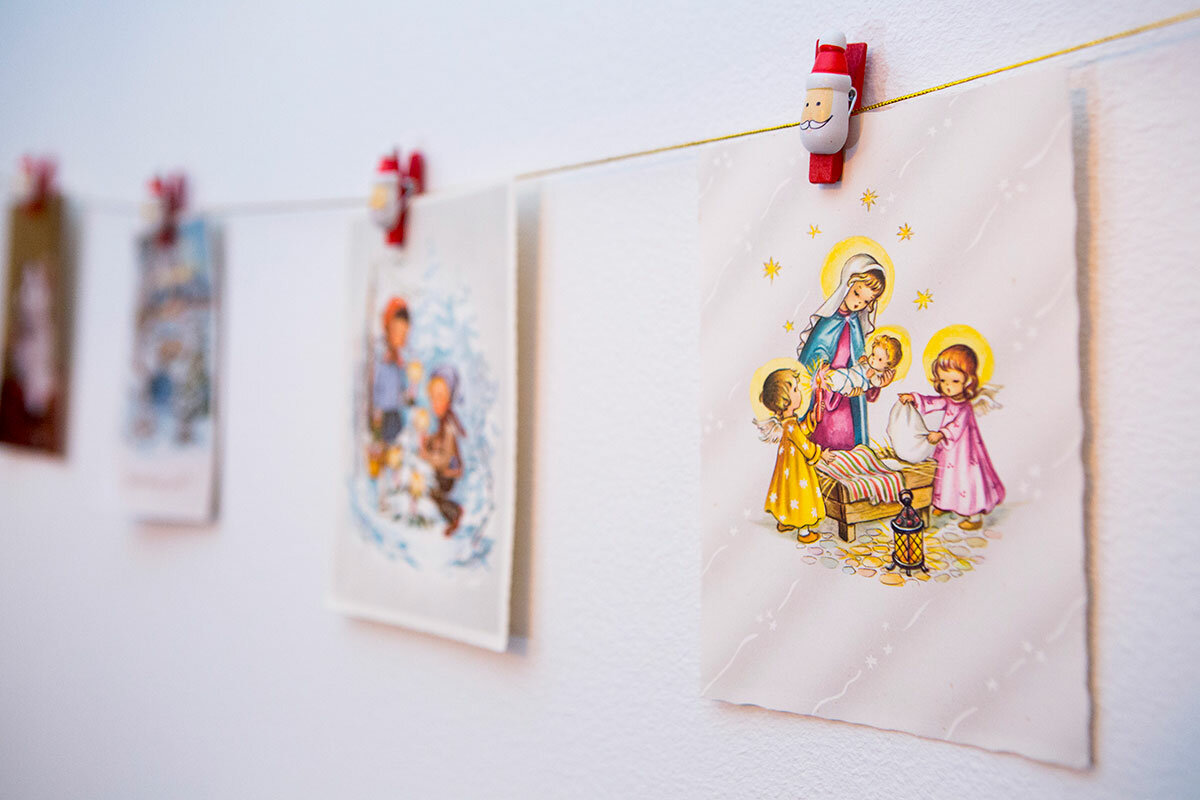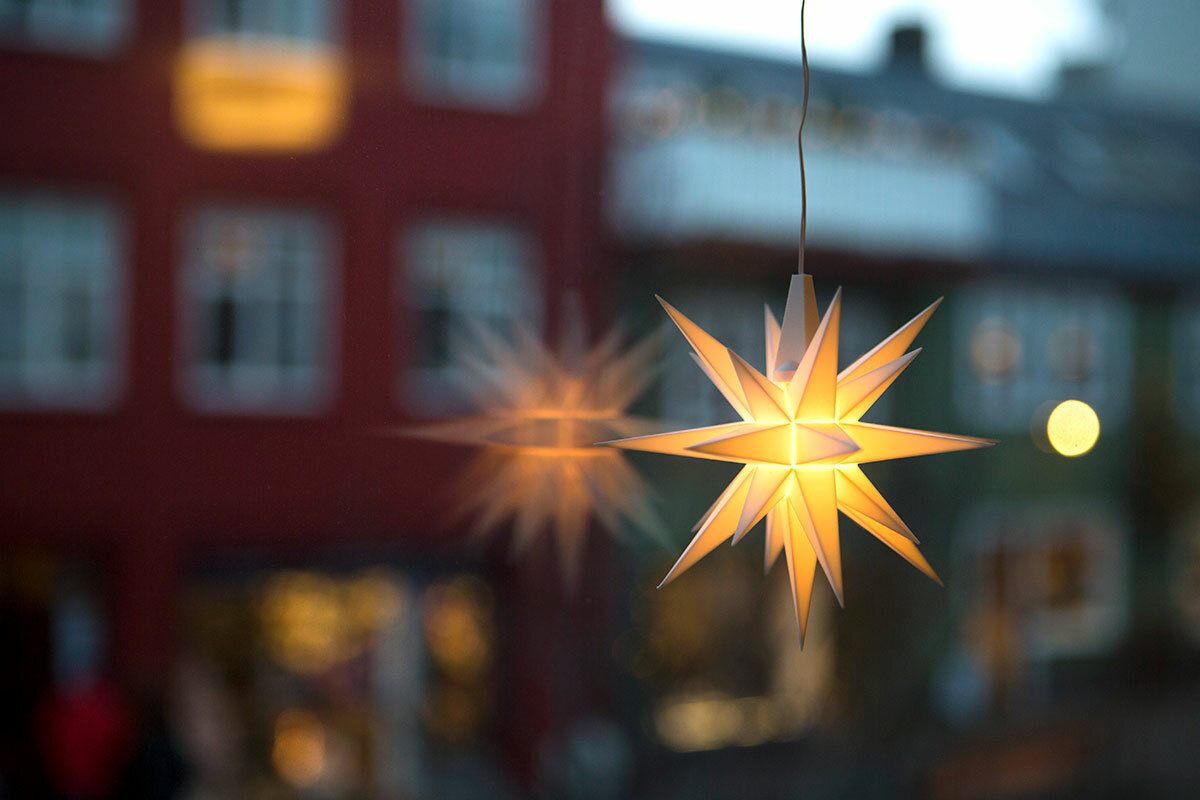Trolls, ogres, and giant cats: How Iceland celebrates Christmas
Loading...
| Reykjavik, Iceland
Dozens of red and white-wax candles flicker in the home of Auður Ösp, in a bright red dress, her Christmas best, as she seats 10 strangers around her dining room table.
There are old-fashioned Christmas cards hung across a string by Santa clips. The table is set with reindeer figurines and snow-dusted pine trees, as our tour group sits down to learn about the many Icelandic traditions at Christmas, called Jól in Icelandic.
But lest anyone be confused, this isn’t the twinkling wonderland of a German Christmas, nor are the Christmas characters anything like jolly Santa Claus, we are about to learn as the icy wind whips up outside.
Here there are 13 mischievous, if not downright creepy, Yule Lads descended from trolls who bring kids gifts – or a raw potato when they are bad, a practice we are assured is still commonplace. Their mother, Gryla, is a horned ogress who poses a double threat, putting naughty kids in a sack to eat later. The Yule Cat lurks outside homes, ready to eat anyone who hasn’t received new clothing items before Christmas.
Ms. Ösp receives wide-eyed stares from two Australian guests, ages 5 and 8, but this folklore does more than frighten wayward children. It speaks to the darkness, literal and figurative, that has shaped belief systems and traditions here and ultimately, the Icelandic temperament.
“Iceland doesn’t do sweet,” says Terry Gunnell, head of the folklore department at the University of Iceland. “Iceland does threats from various outside forces.”
Christmas traditions derive from Norse paganism, at the winter solstice when people, without electricity, were desperate to fend off darkness. That longing remains. Along with steaming outdoor thermal baths, it is candles that help Icelanders cope with less than five hours of sunlight a day, with flames glimmering in homes, cafés, workplaces, even the mayor of Reykjavik’s office.
That darkness has shaped the Icelandic sense of the supernatural, says Professor Gunnell, and today many hold superstitions about trolls or elves or “hidden people” that inhabit the hills around them. He says if you ask an Icelander if he or she believes in elves, most will reply "no." Yet in a survey Gunnell conducted with the university in 2006 and 2007, only 13 percent deny their existence completely.
He says it comes down to respect for a landscape that Icelanders know they can’t out-maneuver. There was the eruption of the volcano Eyjafjallajökull in 2010 that disrupted air travel across Europe and the new rumblings of Öræfajökull, dormant since its last eruption in 1727-28. “Here everyone is aware of these natural powers that are out there.”
This goes mainstream at Christmas time, in the shape of the Yule Lads who descend from the mountains the 13 days before Christmas, each named after their vice, such as Sausage Swiper and Bowl Licker. They’ve morphed into more benign creatures in this century, often dressing in red and seen more as pranksters, but still useful for parents in the month of December.
“We say, 'the [Yule Lads] have already left the mountain, you better go to sleep now,' ” says Olof Bjarnadottir, who teaches a course called “Being Icelandic” at the University of Iceland.
She opens her arms wide. “In summer we are all like this, the community goes outside. Then as the daylight lessens,” she says, spinning in a half circle in her chair and closing her arms until they are folded, “it’s just us, fewer and fewer people are invited. You minimize the circle when it’s Christmas.”
Back in Ösp’s dining room, the guests have never met one another before this evening. But that’s OK, because we are recreating all the traditions that precede Christmas in Iceland.
First up are the small gatherings, called Litlu-Jól, with groups of friends and associations, which Ösp describes on her blog, I heart Reykjavik, as an “Icelandic take on Scandinavian hygge with a Christmas twist.” (Hygge is a much-blogged about Danish word for coziness and conviviality – sometimes involving knitwear and, of course, candles.)
The meal starts with Christmas tea and bowls of homemade cookies, much to the children’s delight. Next up are open-faced sandwiches of raw herring and salmon, Danish recipes common in Christmas buffets that workplaces host and restaurants increasingly offer throughout the month. We are spared the fermented skate that Icelanders eat Dec. 23, the day of St. Thorlák, patron saint of Iceland. The main dish is the traditional Christmas meal of smoked lamb – not to everyone’s taste – and leaf bread, wafer-thin and decorated with intricate patterns.
Jól is at 6 p.m. Dec. 24. And Ösp assures us it is neither 5:45 p.m. nor 6:15 p.m. but 6 sharp, after five minutes of silence on Icelandic radio preceding the chiming of bells and Christmas mass. Her family would sit down and listen to it – as they will this year – even though she’s among 30 percent of Icelanders who don’t officially belong to the Lutheran Church of Iceland, having been married by a pagan priestess in her backyard.
Iceland is one of the most secular nations in the world, but there is no separation of church and state. It’s one of many paradoxes in Icelandic culture. “Icelandic people love to tell you that we are very progressive. … But we are also very, very traditional, and traditions are so important in December,” she says. “I always say Iceland is a country full of contradictions. Ice and fire, volcanoes and glaciers. Icelandic people are exactly the same.”
One of their dearest traditions is the “Christmas book flood.” While iPads and iPhones compete with the written word here too, Icelanders assure visitors that a book is still the most popular gift item, and they are devoured over Christmas holidays. Forget toy catalogues: It’s the “book flood” that kids await in the mail.
Melissa Bates, the mother of two from Australia, says Icelandic Christmas feels more traditional than back home. “Australia has copied America a lot, it’s very commercialized and losing that family feel,” she says. “It seems that here you still put the importance into what Christmas is all about.”










